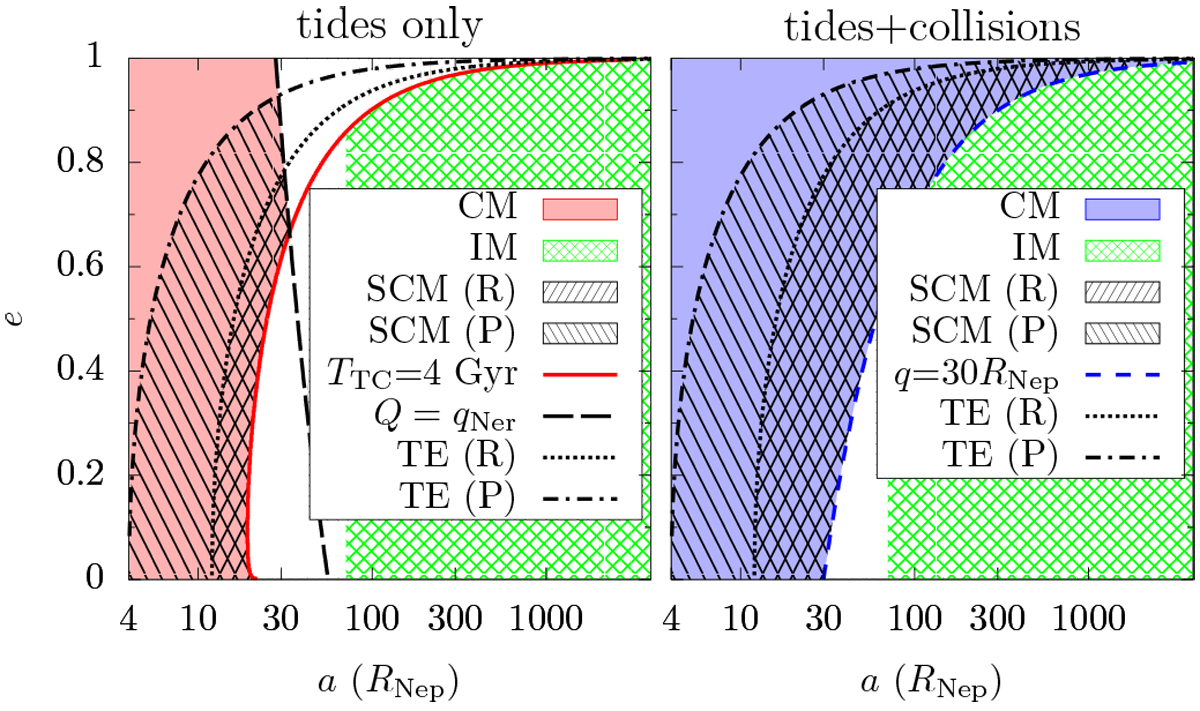Fig. 2

Classification of captured moons at Neptune for the two circularisation models. In the left panel we show the tides-only model. The red solid line shows a tidal circularisation isochrone of 4 Gyr; orbits to the left of the line are circularised by tides over the age of the Solar System. The long-dashed line marks a constant apocentre distance equal to Nereid’s pericentre Q = qNer, thus moons that lie to the right of the line may collide with Nereid. A circularisable moon (CM) has, by definition, a tidal circularisation time of <4 Gyr and, at the same time, does not endanger Nereid (red-shaded region). Due to tidal evolution, a prograde moon to the left of the dash-dotted line [TE (P)] or a retrograde moon to the left of the dotted line [TE (R)] are subject to tidal engulfment by Neptune within 4 Gyr. Correspondingly, moons inthe back-slashed (\\\) region are circularisable and survive tidal engulfment on either prograde [SCM (P)] or in the forward-slashed (///) region on retrograde orbits [SCM (R)]. The green-checked region represents irregular moons (IM) with a > 70 RNep and uncircularisable orbits. In the right panel we show the tides+collisions model. The blue short-dashed line marks a constant pericentre distance q = 30 RNep; orbits on the left (blue-shaded region) can be circularised while those on the right cannot; because collisional evolution is fast, Nereid is essentially safe from collisions and not explicitly considered here. Then TE (P), TE (R), SCM (P), SCM (R), and IM are defined in the same way as in the tides-only model.
Current usage metrics show cumulative count of Article Views (full-text article views including HTML views, PDF and ePub downloads, according to the available data) and Abstracts Views on Vision4Press platform.
Data correspond to usage on the plateform after 2015. The current usage metrics is available 48-96 hours after online publication and is updated daily on week days.
Initial download of the metrics may take a while.


